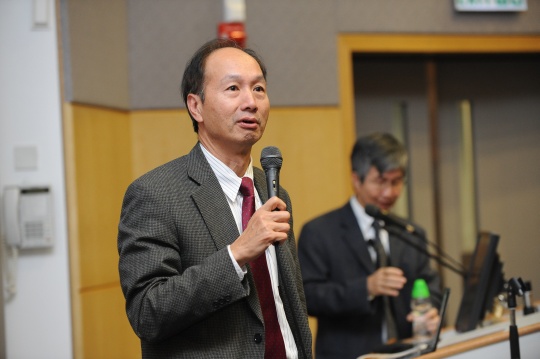Organic Light Emitting Diodes and Organic Solar Cells
Abstract
Organic light emitting diodes (OLEDs) and organic solar cells (OSCs) are non-conventional optoelectronic devices that have demonstrated extraordinary performance and significant advantages. OLED with its superior luminous efficiency and vivid colors has already been successfully commercialized as a display technology with applications ranging from hand-held devices to high-definition television. Along with its thin form factor and light weight, OLED offers other distinctive advantages such as flexibility and transparency. Recently, significant progress in OSCs has been made, resulting in dramatic improvements in the power conversion efficiency which approaches 10%. To a large extent, the advances in these organic devices can be attributed to the evolution of increasingly sophisticated device architectures based on the concept of the donor-acceptor heterojunction. This talk will give an overview of the development of the OLED and OSC technologies, tracing the early discovery of the donor-acceptor heterojunction in OSCs and highlighting the important scientific and technical milestones that shaped the development of OLED displays. Future prospects will also be discussed.
About the speaker
Prof. Ching Tang received his PhD in Physical Chemistry from Cornell University in 1975. He then worked in Eastman Kodak and was named Distinguished Fellow of the Kodak Research Laboratories in 2003. He joined the University of Rochester as the Doris Johns Cherry Professor of Chemical Engineering in 1996, and has joint appointments in the Department of Chemistry and the Department of Physics and Astronomy. Prof Tang was elected Fellow of the American Physical Society in 1998, and Member of the US National Academy of Engineering in 2006. He has received honorary degrees from Shanghai University, and South China Technology University.
Prof. Tang has received numerous awards including the Eastman Kodak Innovation Award (2000), the Jack Rajchman Prize of the Society of Information Display (2001), the Carothers Award of the American Chemical Society (2001), the Rochester Law Association Inventor of the Year Award (2002), the Humboldt Research Award (2005) and the Wolf Prize in Chemistry (2011).










